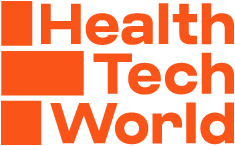
The rising number of healthcare workers in the USA has been named as the nation’s biggest patient safety concern. But what can be done to tackle it?
When COVID-19 hit the States, an estimated 1.5 million health care jobs were lost in the first two months alone. It was reported that some of these jobs have since returned, but according to the US Bureau of Labor figures, the number of workers are still down by 176,000.
Numbers “need to increase dramatically”
The Duquesne University School of Nursing reported that the number of healthcare workers will need to increase “dramatically” over the next few years, if the healthcare system is to recover. Despite this, significant shortages are being forecast in the coming decade.
According to the American Association of Colleges of Nursing (AACN) – the USA may need over 200,000 new nurses per year, for the next three years, in order to replace those going into retirement.
While the news of major staff shortages in the US is nothing new, the numbers are showing time and time again that the problem is far from being fixed – and may even get much worse.
US healthcare staff shortages – the data
- The American Association of Medical Colleges (AAMC) predicts a shortage of as many as 122,000 physicians by 2032.
- Recent figures from the Healthcare Professional Shortage Areas state that it’s largely rural states such as Vermont, Tennessee and Utah that have the highest shortages in medical professionals (per capita).
- The nursing shortage is worsening in part due to the population living longer, adding more pressure to services across the country.
What’s the solution?
Bart Valdez, CEO of Ingenovis Health, told Medical Economics: “As Dr. Klein has shared with me, “When we’re down in staff, that means patients have to wait longer for healthcare.”
“That’s an outcome none of us want or can afford.”
He added: “Whether you are in a small clinic or a large hospital, everyone needs to be prepared to cover those debilitating gaps, and weaving in flexible contingent labor as part of the overall solution is a proven solution for our clients.
“By securing a contingent provider as soon as possible, physicians and hospitals can prepare ahead of time to maintain a workforce solution that can flex with the demands and census of their businesses.
“To play our part and expand capabilities nationwide, we look to acquisitions to grow our provider base of experienced clinicians. We recently acquired HealthCare Support, a national recruitment firm providing clinical and non-clinical staffing solutions.
“We felt it was critically important to provide a complete solution to healthcare offices and organizations, in addition to the nurses and allied professionals that our brands have been staffing nationwide for over 30 years.
The market is “desperate”
“The market is desperate for these clinical and non-clinical professionals, and demand is driving salaries and incentive compensation higher than we’ve ever seen among healthcare workers.
“Few hospitals or medical offices can afford to squeeze margins even tighter to accommodate this permanently, and have sought the short-term assignment lengths offered by the travel nursing model.
“Ultimately, while the cost of contingent labor is higher on an hourly basis, our clients find that the flexibility and financial benefits of staffing up only when you need to and not carrying excess full-time employees, yields a positive net effect.”
Read more USA news here





